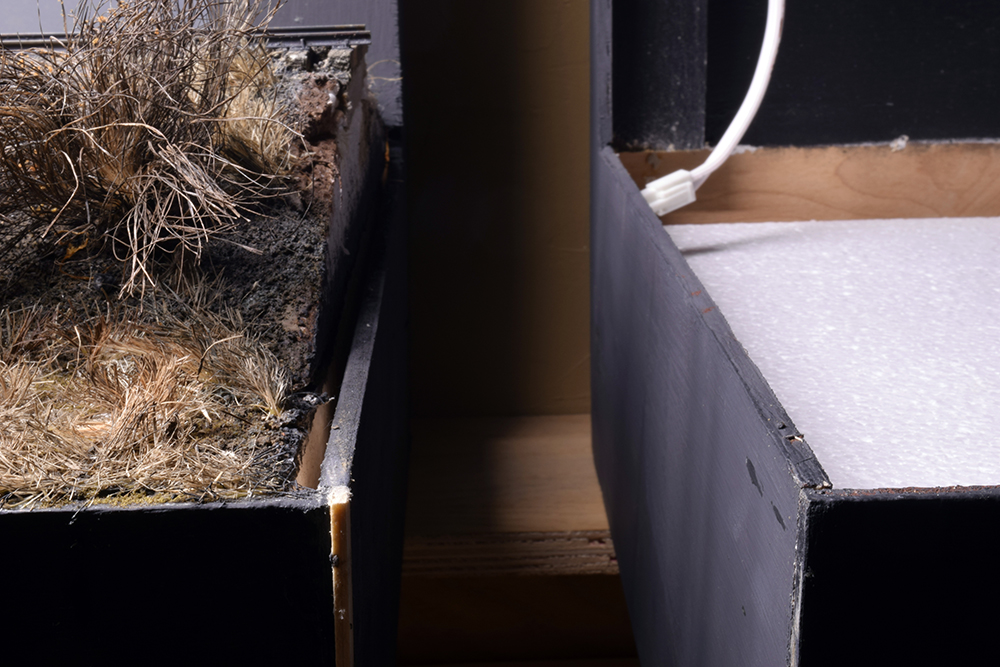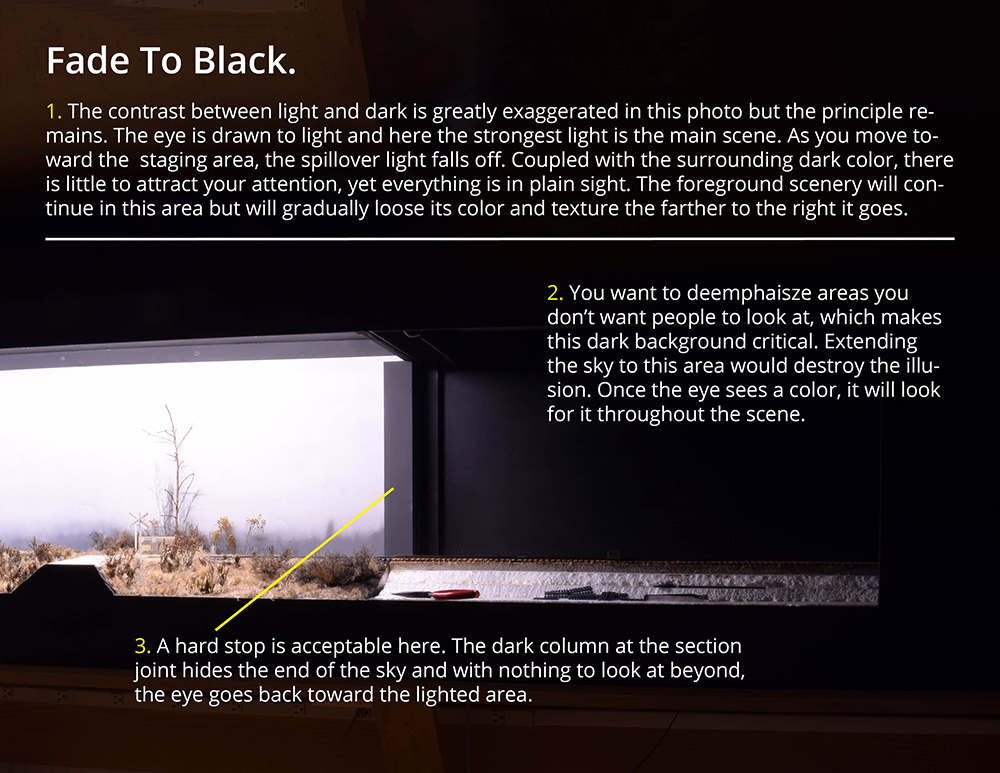I’m using the box from the decommissioned 13th and North E Street scene to extend the running track and transition it into the off-scene staging area. In building these cameo I standardized the basic dimensions so I could couple them together at will. What I neglected to do with Mill Road and 13th Street was ensure each was square. Therefore, I have a gap where they meet instead of the seamless fascia that I want to see.
The end panel of Mill Road was unacceptably out of square so I broke the joint at the front corner and adjusted the end panel, so it would snug up nicely to the other section. Of course this left another gap at the outside corner but that was a simpler matter to deal with. Instead of using wood filler, I glued a length of strip wood into the gap and shaved it down to match the fascia panels. This should be more robust than filler and once painted, it should disappear.

If I’m not going to separate them, was it worth the effort I expended?
The initial gap wasn’t big and with a charcoal gray fascia color and subdued room lights, it wasn’t that noticeable. However, appearances matter to me. I stand right next to the layout and stuff like this drives me nuts until I fix them. I make the effort because I know I can do better and, the only way is to take the time and care to do so. If my own work isn’t worth my best efforts, then why am I doing it?
Bridging The Gap
Beyond any gaps from a poor fit and sloppy construction, I’m not hiding this joint in terms of scenery. The extension won’t feature a sky backdrop and 3D scenery will transition from full texture near the section joint to nothing at the opposite end. Like the transition areas of a theater stage, the mind knows the tricks involved. Following that simile, I will use desaturated colors and subdued lighting to ease the eye across the transition.

The staging portion of the module will be painted flat black over everything. I’m always amazed at the power of a dark neutral color and how the eye ignores it and is drawn to lighter and stronger colors because of the contrast between them. Once you understand the principle, it’s a powerful tool to have.
Mike
Whew…took me a minute to find you but your concern about the joint is valid. It bothered you and you found a good solution. Sometimes it’s the little things like attention to detail that set one’s work apart.